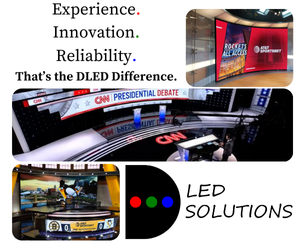Broadcasters adopt zero trust architecture for remote security

Subscribe to NewscastStudio for the latest news, project case studies and product announcements in broadcast technology, creative design and engineering delivered to your inbox.
Remote production workflows, initially accelerated by pandemic requirements, have become standard practice for many tier-one broadcasters. This has prompted media companies to implement more rigorous security frameworks.
Industry security experts report increased adoption of Zero Trust Network Access systems to protect content and infrastructure.
Zero trust architecture represents a shift from traditional security models. While conventional systems operate like a castle with a moat, treating everyone inside the network as trustworthy, zero trust assumes no user or device should automatically receive access to resources, whether inside or outside the organization.
The framework requires continuous verification of every user and device attempting to access network resources. This approach treats each access request as if it originates from an untrusted network, requiring verification regardless of where the connection originates.
“Remote production and mobile editing aren’t just pandemic holdovers—they’re now standard practice,” said Eric Elbaz, principal strategic engagement manager at Akamai. “Broadcasters need to meet their teams where they are—on location, at home, on the go—by using solutions like Zero Trust Network Access, encrypted file transfers and ongoing device monitoring.”
This security model operates like a security guard, repeatedly checking credentials for familiar users. The system monitors for unusual patterns, such as team members attempting to access systems from unexpected locations or at unusual times.
“Strategies should include implementation of robust access controls, such as multi-factor authentication and zero trust architectures, to limit access to sensitive materials only to authorized individuals,” said Terri Davies, president of the Trusted Partner Network (TPN).
The shift to zero trust reflects broader changes in broadcast production workflows. Teams regularly collaborate across geographic boundaries, accessing media assets and production systems from various locations and devices. Each access point represents a potential security risk.
Sam Peterson, COO at Bitcentral, identifies unauthorized access and data breaches as significant threats to content integrity in current production environments.
“In production specifically, threats like signal interception and network breaches endanger both the safety and confidentiality of media assets,” Peterson noted.
To address these risks, broadcasters implement multiple security layers. Beyond zero trust architecture, organizations deploy end-to-end encryption and continuous monitoring systems. These tools work together to verify user identity, secure data transmission and detect potential security breaches.
The security framework extends beyond internal teams to third-party vendors and service providers who access broadcast systems.
Davies noted that ensuring partner compliance with security standards helps “raise awareness and fully understand their security preparedness so they can address vulnerabilities and reduce risk.”
Implementing zero trust architecture requires significant changes to existing security protocols.
Organizations must inventory their assets, map data flows and establish clear policies for access control. The framework affects everyone from production assistants to cloud architects, requiring updates to daily workflows and security practices.
However, industry experts note that these changes help protect against security threats while supporting flexible production models. The architecture allows broadcasters to maintain security without sacrificing the mobility and efficiency that remote production provides.
Subscribe to NewscastStudio for the latest news, project case studies and product announcements in broadcast technology, creative design and engineering delivered to your inbox.



tags
Akamai, Bitcentral, Cybersecurity for Broadcasters, Eric Elbaz, Sam Peterson, security, Terri Davies, TPN, Trusted Partner Network
categories
Broadcast Engineering, Broadcast Facility, Broadcast Facility Technology, Heroes, IP Based Production, Remote Production